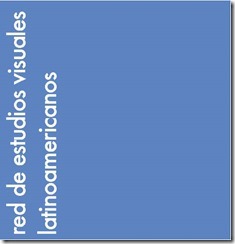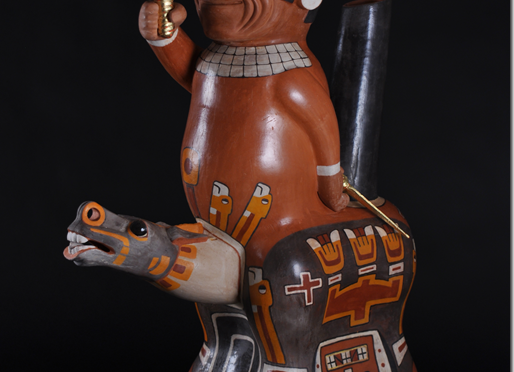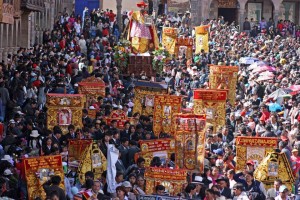
Security is one of the most important topics in International Studies. This concept is not always related to the North, the South has had its own threats too: throughout 19th and 20th centuries there have been Western empires, ideological battles and US interventions. But today, in South America, the main threat is drug trafficking and its roots are in economic globalization.
Free trade around the world is one of the most important long term economic trends and the exploitation of the free trade by emerging powers is an important short term trend. In this way, regions around the world have been impacted by new world economic powers like China. The Chinese demand of commodities around the world has resulted in high international prices and lucrative imports from countries like Chile, Peru and Brazil.
Together with China, Brazil has been very important in South America (in spite of its low growth throughout 2012) especially for countries like Bolivia or Paraguay, two landlocked states, where the main export to the Brazilian market is energy.
Thus, most of South American economies are growing around 4%[1] and during last decade poverty has decreased, even in Bolivia, the poorest regional country;[2] this is mainly because government efforts in this period have been focused on keeping macroeconomic responsibility plus implementation of social programs. Nonetheless, there are two main economic menaces in the region: first, most of South American countries are relying on China’s economy success, which in turn will not be forever. Second, if Brazil keeps its economy dependent on a bumpy Europe, and if the called “Brazil Cost”[3] continues without solution, most of its neighbours will suffer some consequences in the future[4].
In this context, most important security challenge in the region is drug trafficking and the first goal of defence policies is in human security. In order to overcome these issues countries are developing their own military actions: Democratic Security Policy (Colombia), “Ágata” Military Operations (between Brazil, Bolivia and Peru), “BOLBRA” war games (Bolivia and Brazil), or the New National Security Strategy and Defence of Chile whose main theatre of operations is Arica, region located in the border with Peru and Bolivia.
To understand this regional security challenge, first we have to highlight two of its main causes. First, despite the regional economic growth and social programs there are a huge social inequality and a strong social feeling of injustice (let’s remember student’s riots in Chile during 2011), many disadvantaged people choose alternative ways to realise social progress through gang activities. This happens in Rio do Janeiro (Brazil), Ciudad del Este (Paraguay), VRAEM (Peru), La Legua (Chile), and so on. It is certainly true that South American social problems could be worst if emerging powers cannot maintain its economy growth in the future.
Second, the economic growth and social programs in countries like Chile or Brazil have resulted in a huge middle class with capacity to consumption and, therefore, drugs traffickers have new markets to sell cocaine, besides its traditional big markets such as the United States and Western Europe. Clear example of this is the power gained by gang Primero Comando da Capital in Sao Paulo, which traffics from Paulist jails to the Brazilian market. In this sense, it is very important for Brazilian authorities to keep the control over international borders, because these gangs make business with cocaine dealers from Bolivia or Peru.
Without doubt, the situation is more complex when gang activities are connected to terrorist groups or irregular armies like the FARC. In this case the Colombian government has made enormous military and political efforts in order to combat this organization; actually today there is hope on Colombian peace negotiations lead by President Santos, because the end of war in Colombia could be the end of the main “narco-guerrilla”.
The Colombian case is especially worrying due to the guerrilla’s war impacts on Venezuela and Ecuador[5], two countries known by their difficult borders. According to the UNODC (2012) Venezuela has become the main port for Colombian cocaine to transatlantic routes, and Ecuador has become an important transit place too.
There is not easy solution to this kind of regional challenge, because drug trafficking and social inequalities are the first link in an intricate chain connecting Central America and Mexico, where transnational criminal gangs have got a dangerous power. On the other hand, South American countries are not the primarily responsible or, at least they are not only responsible of drug trafficking, because the primarily cocaine consumers are in the West.
In other words, this problem seems to be a transnational issue, and in this sense, one alternative would be legalizing the cocaine trafficking in order to dismiss criminal gangs, to get secure cocaine markets and better statistics of cocaine consumers. But this kind of solution would require big cultural and institutional changes.
For instance, in Uruguay President José Mujica has recently proposed to legalize marijuana consumption and to educate people about this issue, but this proposal will not be able to become law while conservative groups have influence over popular opinion, especially the Catholic Church and right wing parties. In fact, Mujica recognized later that society is not yet ready to this kind of measures.
Another important step has been Bolivian experience during Evo Morales presidency, because his administration recognizes coca leaf farmer rights and coca cultural values. Bolivian policies on coca leaf represent a deep change of mentality since DEA interventions in the country two decades ago, when coca leaf activities were synonymous of crime. But at the same time, the new Bolivian institutional model has not meant the end or decrease of illegal coca leaf planting.
Both Uruguay and Bolivia cases show that, at least, the legalization debate has started. In this sense, maybe the most important signal of a new time has been the Global Commission on Drug Policy, where much respected intellectuals and politicians were able to participate, such as Mario Vargas Llosa, Fernando Enrique Cardoso, César Gaviria, Ernesto Zedillo, Kofi Annan, Paul Volcker and George P. Schultz. In its report (2011) the Commission proposed to create new institutional models around the world in order to legalize drugs. The main argument for this proposal is the failure of drug policies during last fifty years, especially the war against drugs launched by President Nixon; together with this, the commission stated the importance to pay more attention to health programs instead of military policies[6].
Notwithstanding this, all these signals are not enough to take seriously an international legalization model and certainly they are not enough to overcome current military policies as key actions to combat drugs trafficking.
Claudio Coloma is an academic at the University of Santiago of Chile
Notes
[1] IMF-Western Hemisphere Department. Regional Economic Outlook. Washington, D.C. October 2012.
[2] Weisbrot, Mark, Rebecca Ray and Jake Johnston. Bolivia: The Economy During the Morales Administration. Center for Economic and Policy Research. Washington, D.C. December 2009.
[3] Combination of bureaucratic hurdles, complex taxes and insufficient infrastructure. Glickhouse, Rachel. Rousseff Takes on the Infamous “Brazil Cost”. AS/COA. May 22, 2012.
[4] According to IMF “low growth and uncertainty in advanced economies are affecting emerging market and developing economies”. Emerging powers such as China and Brazil are reliant on developed countries, especially USA and UE. IMF. World Economic Outlook. Washington, D.C. October 2012.
[5] IISS. The FARC Files: Venezuela, Ecuador and the Secret Archive of ´Raúl Reyes`. London. 2011.
[6] Informe de la Comisión Global de Políticas de Drogas, junio de 2011, www.globalcommissiondrugs.org












.jpg)
